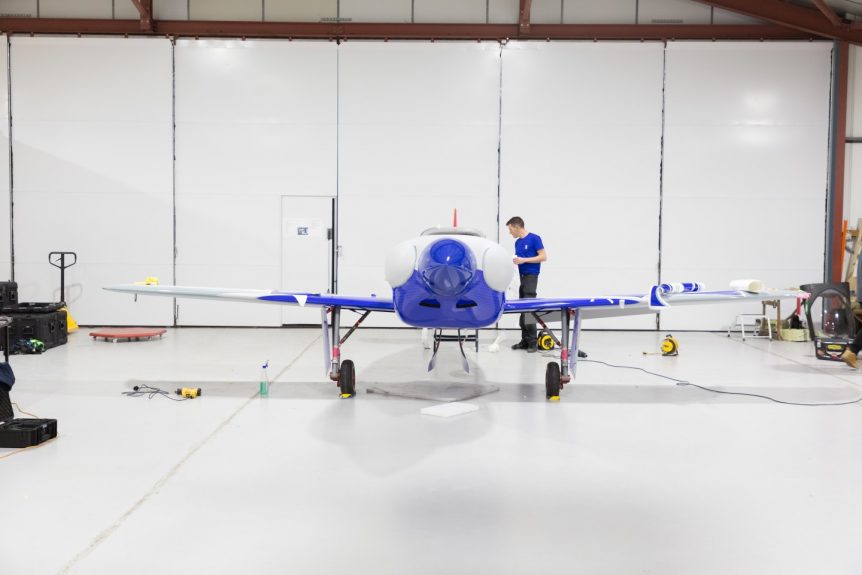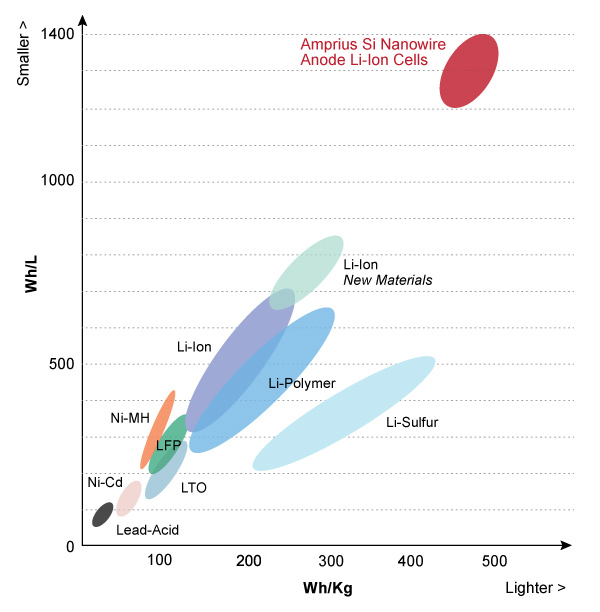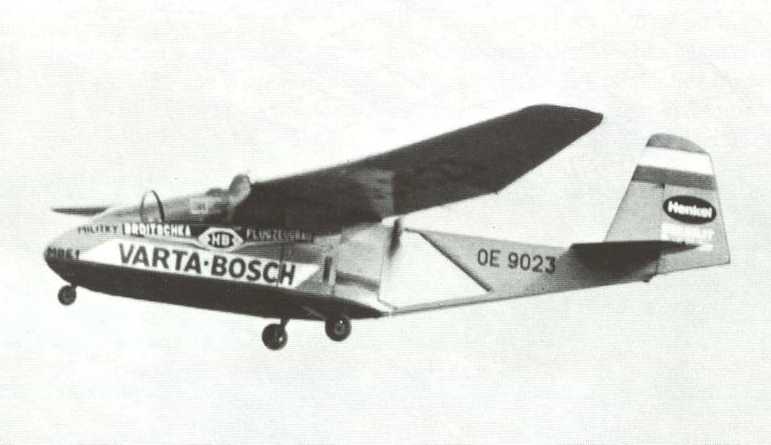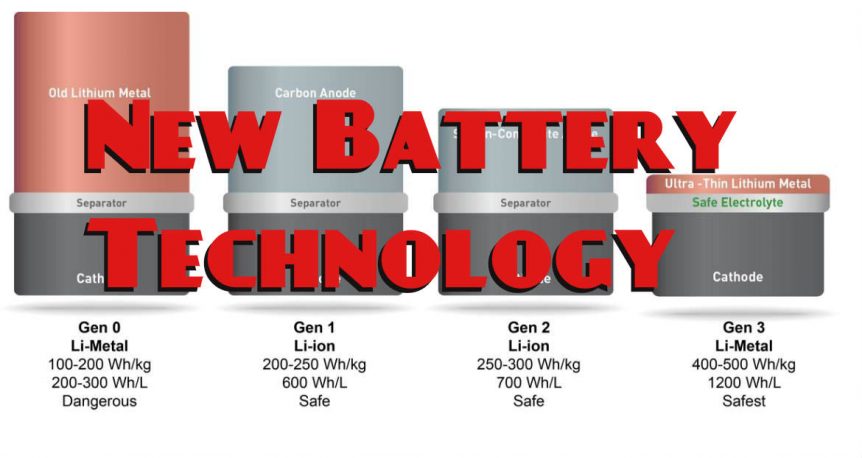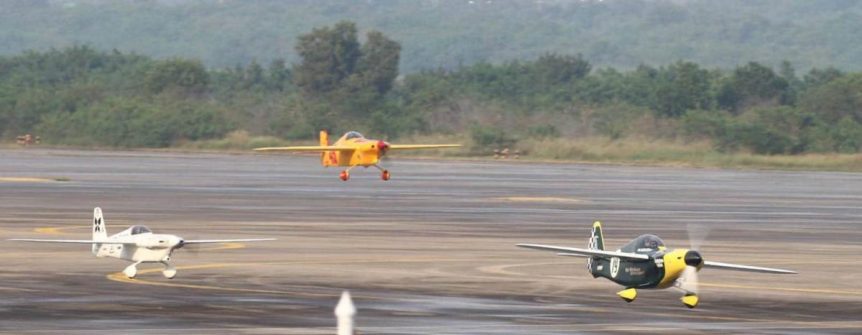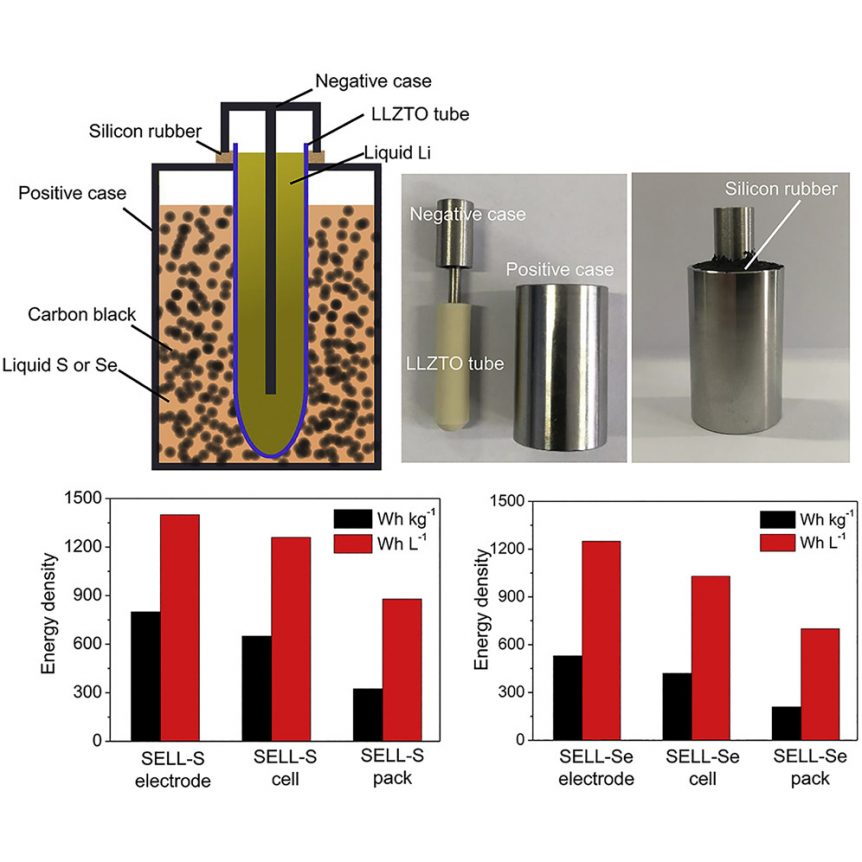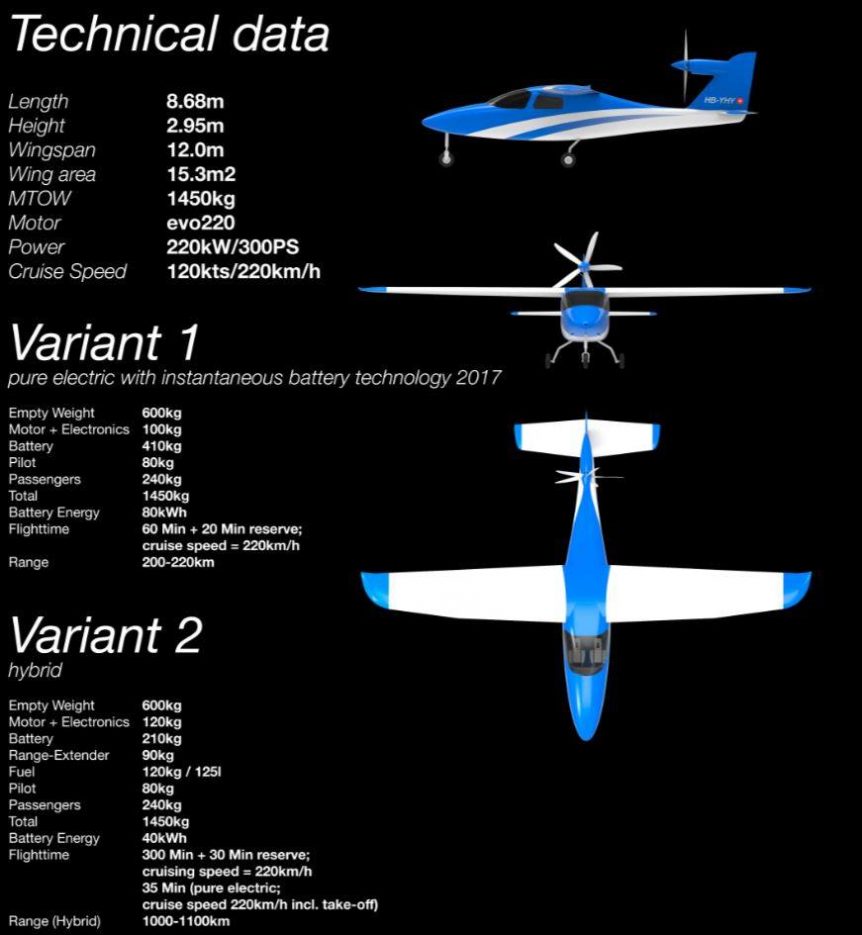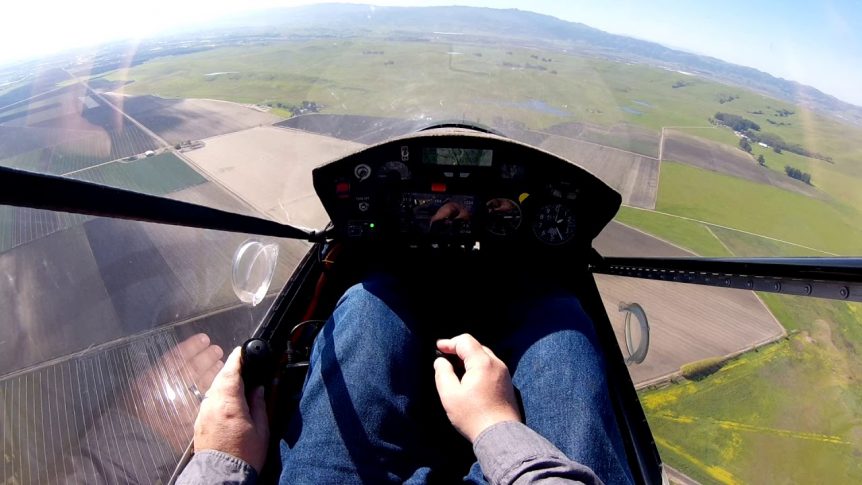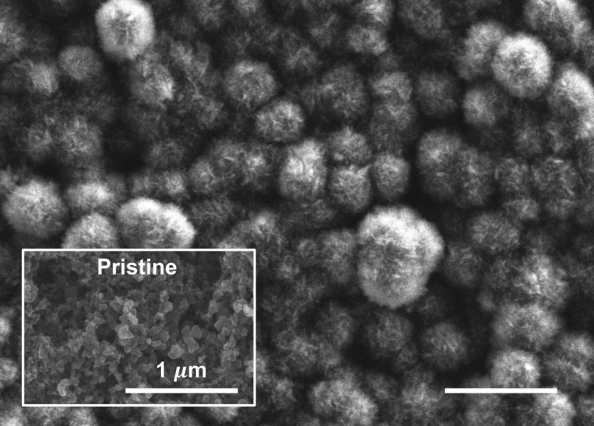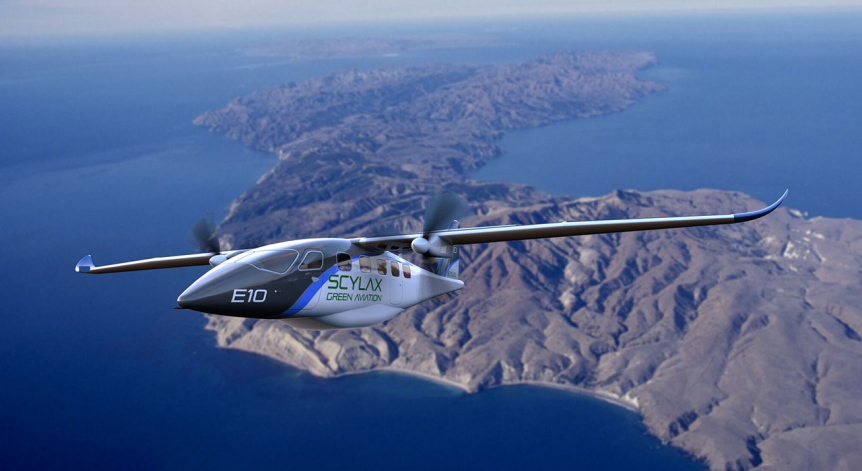Rolls-Royce is perhaps the epitome of Britishness, going back to 1904, when Henry Royce, founder of a successful mechanical/electrical business, met Charles Rolls, a successful car dealer in London. Together, the founded the company which came to be known as Rolls-Royce. By 1906, their Silver Ghost was known as “the best car in the world.” That quality was inherent in their first aircraft engine, the Eagle, “providing some half of the total horsepower used in the air war by the allies.” It provided the power in 1919 for the first direct flight across the Atlantic and the first flight from England to Australia – both in Vickers Vimy aircraft. This led to racing success, with early V-12 engines by R-R powering Schneider Cup racers in the 1930’s, leading to the Merlin, which powered Hawker Hurricanes, Vickers Spitfires, and P-51 Mustangs. Their current ACCELL project hopes to continue that tradition. Rolls-Royce would love to have another round of victories to continue …
Amprius, Airbus, Silicon and Batteries
Batteries are a tough study. We see many different roads being traveled in attempts to reach the Nirvana of the lightest, most powerful energy storage cell ever. We see continuing shortfalls because of the much chemistries that seem never to work out as hoped. Several recent articles, though, showed links that forced your editor into a deep study of battery developments first heard about a decade ago. These involved Yi Cui, Stanford professor and battery guru, silicon electrodes, and a new electrolyte that holds thing together. Presaging recent developments, your editor first heard Yi Cui present at the 2009 CAFE Foundation Electric Aircraft Symposium. Then, he predicted, based on the theoretical limits for silicon-based electrodes in batteries, that we would see 10X (greater energy density than then available) batteries in the not-too-distant future. A decade later, his company Amprius may be edging toward that goal with new funding from Airbus. Since then, Cui, his students and associates have helped boost …
Austrians, Swiss, Chinese Launch Three New Electric Aircraft
Three companies with divergent backgrounds launched three new electric aircraft in the last few months. 1973, and Its Descendants are Still Electric As noted in the blurb for its historic YouTube video for its first electric flight 46 years ago, “HB Flugtechnik is the pioneer in electric flight. The world’s first electric powered flight took place on October 21st, 1973 in Austria. 50 years later this company is still in business and doing better than ever. Given, that we talk about the aviation business, this is an outstanding and remarkable achievement. Today, HB Flugtechnik located at the now newly refurbished airfield Hofkirchen LOLH is not only the major MRO (Maintenance, Repair Organization or Maintenance, Repair, and Overhaul) for aircraft in Austria, it is still working on the new frontier of electric flight.” In a 2012 presentation at the AVT-209 Workshop in Lisbon, Portugal in 2012, Dr. Martin Hepperle of the DLR Institute of Aerodynamics and Flow Technology in Braunschweig, Germany …
Breakthrough Batteries Two Years Away?
Breakthrough Batteries: Powering the Era of Clean Electrification A paper by Charlie Bloch, James Newcomb, Samhita Shiledar, and Madeline Tyson of the Rocky Mountain Institute describing the near future of battery development predicts and accelerated pace of “the global energy transition” and the growing role of energy storage in “addressing the climate crisis.” Will these “breakthough batteries” power us into the near future? Their report* notes the economic investment and potential impacts of ongoing research, which to this editor seems minor when compared to the gravity of the ongoing climate crisis. Researchers estimate “more than $1.4 billion invested in battery technologies in the first half of 2019 alone,” less than 10 percent of the $16 billion spent in 2016 on plastic surgery. Apparently, saving the planet is not nearly as crucial as getting butt lifts and Botox wrinkle removals. Despite this, the Institute insists, “… {M}assive investments in battery manufacturing and steady advances in technology have set in motion a …
Air Race E Leaps Forward with Eight Teams
The public got a glimpse of Air Race E at this year’s Dubai Air Show. Jeff Zaltman, CEO of Air Race E and Sandra Bour-Schaeffer, head of XO Airbus Demonstrators, pulled the wraps on Team Condor’s converted Cassutt racer – one of eight teams entering the fray. Race E is an update of the classic small aircraft races held following World War II, and many of the airplanes in the upcoming events will be re-motored and redesigned versions of these craft. Formula 1 racing has not changed much since its 1947 inception. Most air small air racers relied on the Continental C-85 engine, mildly uprated and turning faster than it did in Aeronca Champions or Piper Cubs. Formula E is the first major change and new technology in the field in over 70 years. With the advent of Air Race E, designers are encouraged to create new machines and rethink the means of propulsion. At least eight organizations are …
Solid State Lithium Sulfur and Lithium Selenium Batteries
In battery making, recipes for electrolytes play an important part of the whole. In a new formula whipped up by Zhengzhou University, Tsinghua University and Stanford University, Lithium (Li), Lanthanum (La), Zirconium (Zr), Tantalum (Ta), and Oxygen (O) form a ceramic tube as the battery’s electrolyte. This tube is centered in new solid state Lithium Sulfur and Lithium Selenium batteries. Researchers filled that tube with a liquid lithium electrode, and immersed the tube in a bath of carbon black and liquid selenium or sulfur in a stainless steel container. The team’s paper, “High Energy-Density Solid Electrolyte-Based Liquid Li-S and Li-Se Batteries,” published in the October 15 edition of Joule, explains the new batteries should be capable of delivering energy densities of around 2,600 Watt-hours per kilogram for the lithium-sulfur chemistry and 1,160 Wh/kg. for lithium-selenium. Currently, researchers have achieve 500 Wh/kg, double the best Li packs today. This can be achieved at cost of $41 per kilowatt-hour for the Li-Se …
The Villiger Traveler Updated
Urs Villiger flew his Traveler TR230 four-seat touring craft about 10 years ago. He started revising the Cessna-like vehicle two years ago, turning it into a more aerodynamic and economical machine. His changes turned the Traveler into a hybrid aircraft and relocated the propeller to the vertical stabilizer. Reflecting professor Dipl.-Ing. Rudolf Voit-Nitschmann’s configurations he developed for Icare II and e-Genius, the low-drag placement of the drive motor near the top of the vertical fin confines the added drag caused by the propeller’s acceleration of air over the aircraft’s skin to the top-most part of the fin and rudder. Compare the area exposed to propeller blast to that of a conventional nose-mounted engine “tractor” type aircraft. On static display at this September’s Smart Flyer Challenge in Grenchen, Switzerland, the newly revised Traveler showed a streamlined nose fairing that holds a gas turbine (reported from a Panavia Tornado fighter’s auxiliary power unit (APU) attached to the UQM motor/generator. That unit charges …
SAS 2019 – Gabriel DeVault’s Clean Commute and Electric Adventures
An electric ultralight developer brought some hopeful notes to the Sustainable Aviation Symposium audience at the University of California Berkeley. Gabriel DeVault is the powertrain development specialist for ZeroAvia, bringing hydrogen power to regional air commuting. He does a lot of commuting in his own electric aircraft, showing that one doesn’t need huge investments in aircraft and infrastructure to enjoy green flight. The Paul MacCready Honorary Lecture: Doing More with Less, Right Now! An Aerospace Engineer and EV systems architect, Gabriel was a founding member of Zero Motorcycles, running R&D for the world’s largest and most successful electric motorcycle company. He now works for ZeroAvia, a firm in Hollister, California working with a hydrogen-powered electric Piper Malibu as the first step toward developing clean aerial commuters. He has worked for JOBY Aviation and designed the HEIST (Hybrid-Electric Integrated Systems Testbed), a Peterbuilt semi pulling a rolling wind tunnel with the high-mounted X-57 Maxwell wing and power system helping pull things …
Charging Carbon Dioxide Batteries and Clearing the Air
We would love to find ways to reduce carbon dioxide as a threat to our climate with an ever-decreasing timeline for accomplishing that task. University of Illinois at Chicago and Massachusetts Institute of Technology (MIT) have made inroads into creating a carbon dioxide battery that uses CO2 as an energy storage component. Amin Salehi-Khojin, associate professor of mechanical and industrial engineering at UIC’s College of Engineering, explains, “Lithium-carbon dioxide batteries have been attractive for a long time, but in practice, we have been unable to get one that is truly efficient until now.” A 7X Battery The incentive to use CO2 comes from lithium-carbon dioxide batteries having a specific energy density more than seven times greater than conventional lithium-ion cells. Unfortunately, until now, Li-CO2 batteries haven’t been rechargeable – at least for a reasonable number of cycles. Now, researchers at the University of Illinois at Chicago have demonstrated, “lithium-carbon dioxide batteries can be designed to operate in a fully rechargeable …
Scylax E10: Electric Flight Over the North Sea
A joint venture between the East Frisian FLN airline (FLN FRISIA-Luftverkehr GmbH Norddeich) and Munich aircraft manufacturer Scylax GmbH has helped expand the success of two “clean-sheet” designs, the E6 and E10. Both are promised to China Blue Airlines, and their first-time sale to a German-based airline will help ensure economies of scale for production. Short Runs with no Range Anxiety FLN already operates 10 BN-2 Norman Britten Islanders and a few Cessna 172s and 182s. The Islanders would be replaced over time by E10s. As one can imagine, The North Sea and limited airports make special demands on aircraft, including being able to take off and land in 300 meters (984 feet) and manage 40 knot (46 mph) crosswinds , as depicted in the videos of Norman Britten Islanders landing on the airport at Nordern. Electric craft should have even better performance. Founded in 1969 to supplement shipping traffic to the East Frisian islands of Juist and Norderney, FLN Frisia-Luftverkehr GmbH …

